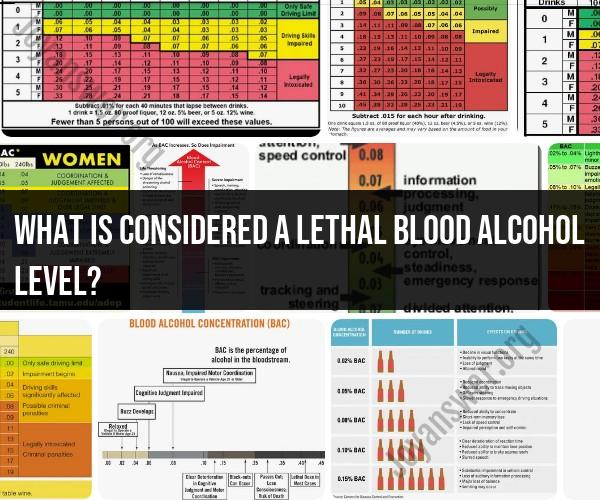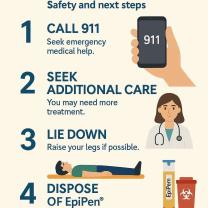What is considered a lethal blood alcohol level?
The lethal blood alcohol level, or the level of alcohol in the bloodstream at which it becomes life-threatening, can vary significantly from person to person based on factors like age, weight, tolerance, and overall health. There is no universally agreed-upon "lethal" blood alcohol level because it varies among individuals.
However, it's important to note that a blood alcohol content (BAC) well above 0.40% is generally considered extremely dangerous and life-threatening for most people. At this level, severe alcohol poisoning and the risk of death become significant. Symptoms of extreme intoxication at this level may include:
- Severe confusion
- Loss of consciousness
- Slow or irregular breathing
- Hypothermia (very low body temperature)
- Cyanosis (bluish or pale skin, especially around the lips or fingertips)
- Seizures
If someone exhibits these symptoms or if you suspect that they have a dangerously high BAC, it is a medical emergency, and you should seek immediate medical attention by calling 911 or your local emergency services.
It's essential to remember that even at lower BAC levels, alcohol impairs judgment, coordination, and motor skills, increasing the risk of accidents, injuries, and fatalities. Therefore, responsible alcohol consumption and avoiding drinking and driving are crucial for personal safety and the safety of others on the road. Always have a designated driver, use public transportation, or arrange for a ride-sharing service if you've been drinking.
Lethal Blood Alcohol Level: Understanding the Dangers
A lethal blood alcohol concentration (BAC) is the level of alcohol in the blood that can cause death. The exact lethal BAC can vary from person to person, but it is generally considered to be between 0.40% and 0.50% BAC.
At a BAC of 0.40% or higher, a person's breathing and heart rate can slow down significantly. They may also lose consciousness and fall into a coma. In some cases, death can occur due to respiratory arrest (stopping of breathing).
Alcohol and Lethality: Exploring the Concept of Lethal BAC
The concept of a lethal BAC is complex and there are a number of factors that can influence it, including:
- Individual factors: People of different sizes, genders, and ages may have different lethal BACs.
- Type of alcohol: Different types of alcohol can be absorbed into the bloodstream at different rates. For example, beer is absorbed more slowly than hard liquor.
- Food intake: Eating food can slow down the absorption of alcohol into the bloodstream.
- Medication use: Some medications can interact with alcohol and increase the risk of toxicity.
The Threshold of Danger: Defining a Lethal Blood Alcohol Level
While the exact lethal BAC can vary from person to person, there are some general guidelines that can be used to define the threshold of danger.
At a BAC of 0.30% or higher, a person is at serious risk of alcohol poisoning. They may experience symptoms such as confusion, vomiting, and loss of consciousness.
At a BAC of 0.40% or higher, a person is at risk of coma and death.
If you suspect that someone has a high BAC, it is important to call 911 immediately.
It is important to note that even a low BAC can impair your judgment and reaction time. It is never safe to drive under the influence of alcohol.












